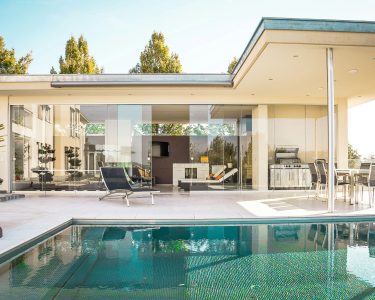Originally posted on: https://buildersblaster.com/sustainability-in-marine-construction-navigating-towards-a-greener-future/
In the realm of marine construction, the tides are turning towards sustainability. As the world grapples with environmental challenges, the focus on sustainable marine construction has never been more critical. This article delves into the innovative practices reshaping the industry, highlighting the use of eco-friendly materials, renewable energy integration, and nature-based solutions.
The Rise of Eco-Friendly Materials in Marine Infrastructuremafri
Recycled Plastics in Marine Construction
The innovative use of recycled plastics in marine construction is a testament to the industry’s shift towards sustainability. As the world struggles with plastic pollution, especially in our oceans, repurposing this waste into construction materials presents a practical and eco-friendly solution. Recycled plastics are being transformed into various forms like beams, pilings, and even modular blocks used in building docks, piers, and protective barriers. These materials offer significant environmental benefits by diverting plastic waste from landfills and oceans, thereby reducing the impact on marine life and ecosystems.
Additionally, recycled plastic products in marine construction boast superior durability compared to traditional materials. They are resistant to corrosion, rot, and marine borers, which are common problems in marine environments. Marine environments are also often exposed to inclement weather, which makes recycled plastic products the best choice for storm-proofing your marine construction. This longevity translates to lower maintenance and replacement costs, making them a cost-effective choice in the long run. Moreover, the versatility of recycled plastics allows for innovative design approaches in marine infrastructure, catering to both functionality and aesthetic appeal. While the upfront cost may be higher than conventional materials, the long-term savings and environmental benefits justify the investment, positioning recycled plastics as a key player in the future of sustainable marine construction.
Bio-Based Materials and Self-Healing Concrete
Bio-based materials are revolutionizing marine construction with their eco-friendly properties and compatibility with marine ecosystems. Materials like biodegradable geotextiles and engineered bamboo are emerging as sustainable alternatives to conventional construction materials. These bio-based options are not only environmentally friendly but also blend seamlessly with the marine surroundings, minimizing the ecological footprint of construction projects. They offer a sustainable approach to building marine structures, significantly reducing the carbon emissions associated with traditional building materials.
Self-healing concrete is another groundbreaking development in marine construction. This innovative material is embedded with specific bacteria that activate in the presence of water and air, producing limestone to naturally fill any cracks that develop over time. This self-repairing ability extends the lifespan of marine structures, reducing the need for frequent repairs and maintenance. Self-healing concrete is particularly beneficial in harsh marine environments, where structures are constantly exposed to corrosive elements. While the initial cost of this technology may be higher than traditional concrete, the reduction in long-term maintenance costs and the extended lifespan of the structures make it a financially viable and environmentally responsible choice. The adoption of self-healing concrete in marine construction represents a significant step towards building more resilient and sustainable marine infrastructure.
Harnessing Wave and Tidal Energy for Sustainable Marine Development
Integrating Renewable Energy Systems
The integration of wave and tidal energy systems into marine construction projects represents a pivotal shift towards sustainable and renewable energy sources. These systems capture the immense and constant power generated by the natural movements of the sea, providing a reliable and clean energy source. Unlike traditional fossil fuels, wave and tidal energy are abundant and inexhaustible, offering a sustainable alternative that can significantly reduce carbon emissions and help combat climate change.
Wave energy converters, for example, utilize the up-and-down movement of waves to generate electricity, while tidal energy systems harness the energy from tidal flows or the rise and fall of tides. The potential of these technologies is immense, especially in coastal regions with strong tidal currents and significant wave action. Integrating these renewable energy sources into marine construction not only powers these projects but also contributes surplus energy back to the grid, supporting the wider adoption of green energy.
However, the adoption of wave and tidal energy in marine construction is not without challenges. The initial investment for installing these systems can be substantial, and the technology is still in a developmental stage compared to more established renewable sources like solar and wind energy. Additionally, there are environmental considerations, such as the potential impact on marine ecosystems and navigation. Despite these challenges, the long-term benefits—both environmental and economic—of harnessing wave and tidal energy are undeniable. These systems offer a pathway to reduce reliance on fossil fuels, lower greenhouse gas emissions, and move towards a more sustainable future in marine development.
In addition, the development and deployment of wave and tidal energy systems can drive innovation in the marine construction sector. As these technologies advance, they offer opportunities for job creation, technological development, and economic growth, particularly in coastal communities. The integration of renewable energy sources into marine construction is not just an environmental imperative but also an economic opportunity, aligning with the broader goals of the blue economy. This transition to sustainable energy sources in marine environments underscores the industry’s commitment to eco-friendly practices and sets a precedent for future developments in marine construction and energy production.
Building with Nature: Creating Resilient Coastlines through Living Shorelines
The Ecological Benefits of Living Shorelines
Living shorelines stand as a testament to sustainable marine construction, offering a plethora of ecological benefits. Unlike conventional coastal protection methods, living shorelines work in harmony with nature, enhancing local biodiversity and ecosystem health. By incorporating natural elements like native plants, oysters, and other bivalves, these shorelines create habitats for a variety of marine and terrestrial species. This biodiversity boost contributes to healthier ecosystems, as these plants and animals play critical roles in maintaining ecological balance, from water filtration to providing breeding grounds for fish and birds.
Moreover, living shorelines have a natural ability to improve water quality. Vegetation in these areas acts as a natural filter, absorbing pollutants and excess nutrients from runoff before they enter the ocean. This filtration process is crucial in maintaining the health of marine environments, particularly in areas suffering from urban or agricultural runoff. Additionally, the root systems of the plants stabilize sediment, reducing erosion and the turbidity of coastal waters. Clearer water not only benefits marine life but also enhances the aesthetic and recreational value of the area.
Comparing Living Shorelines and Traditional Seawalls
When compared to traditional seawalls, living shorelines offer a more sustainable and ecologically sound approach to coastal protection. Seawalls, often constructed from concrete or other hard materials, provide a rigid barrier against wave action. While effective in the short term, they can lead to increased erosion at their flanks and degrade natural habitats. Over time, these hard structures can become less effective, particularly as sea levels rise and storm patterns change due to climate change.
In contrast, living shorelines present a dynamic solution that adapts to and mitigates changing environmental conditions. They absorb and dissipate wave energy rather than simply blocking it, reducing the risk of erosion both on the protected site and neighboring areas. This softer approach helps maintain the natural shape and function of the coastline, allowing for the movement and natural replenishment of sediments. As living shorelines consist of natural elements, they are more resilient to the impacts of climate change, such as rising sea levels and increased storm intensity. They can adapt and grow over time, providing long-lasting protection that evolves with the changing environment.
Furthermore, living shorelines offer greater flexibility in design compared to traditional seawalls. They can be tailored to fit the specific ecological and geological conditions of each site, ensuring optimal protection and environmental integration. This customization not only enhances the effectiveness of the shoreline but also allows for the preservation of the natural character and beauty of the coastal area.
Conclusion: Charting the Course for Sustainable Marine Infrastructure
The journey towards sustainable marine construction is paved with innovative practices and materials. From recycled plastics and bio-based materials to self-healing concrete, the industry is embracing eco-friendly solutions. The integration of renewable energy like wave and tidal power further underscores the commitment to sustainability. Moreover, the adoption of living shorelines marks a significant step in building resilient and ecologically sound coastal infrastructure.
As we sail into the future, it’s clear that sustainable practices will be the cornerstone of marine construction. The environmental, economic, and social benefits of these practices make them not just desirable but essential. By prioritizing sustainability, the marine construction industry can play a pivotal role in preserving our oceans and coastlines for future generations. The blue economy is not just a concept but a reality that can be achieved through dedication, innovation, and a commitment to the planet.





